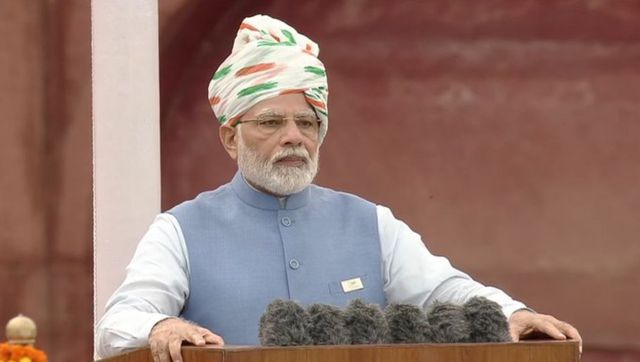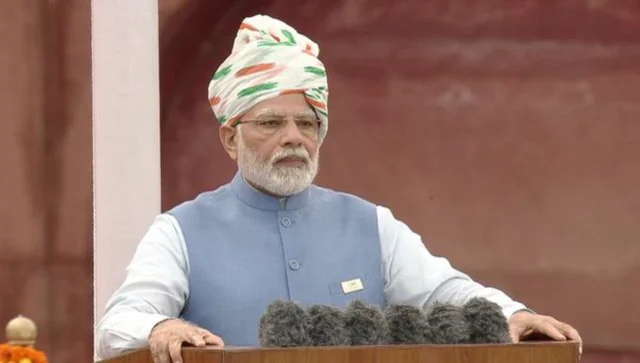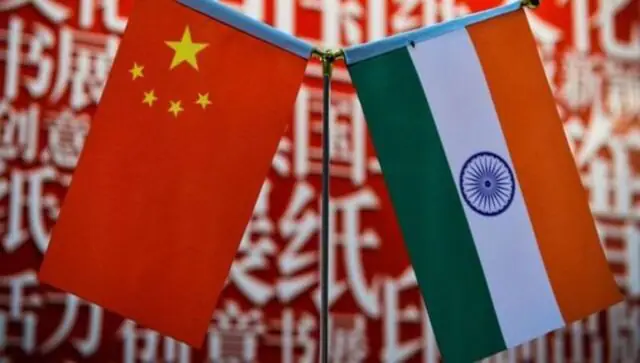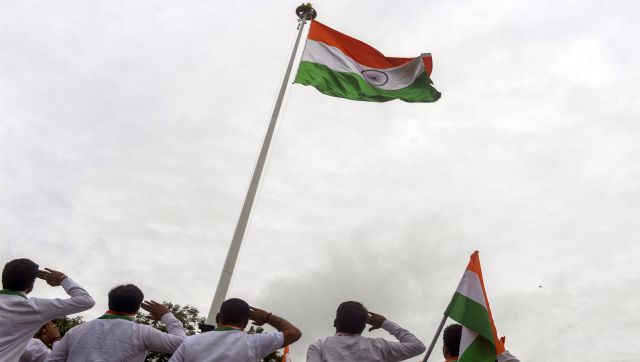Jai Vigyan, Jai Anusandhaan: Exhortation for innovation and the unconventional

- Reporter 02
- 24 Aug, 2022
Words said from the ramparts of the Red Fort not only carry progressive weight but also an intellectual burden. The leader from an ensemble of various prospects, outlined in about one-third of his speech how science, technology, and innovation play an important role in the developmental dynamics of the nation and how he thinks that would lead us into the future. It was not a regular Independence Day speech this year, it was a speech that very systematically laid out India’s scientific agendas, her aspirations, and her scientific position not only for the next 25 years that the prime minister calls ‘Amrit Kaal’ but also for the world ready to assemble in India next year for G20.
Innovation has been a central term in the prime ministerial discourse for a while now and it was given special attention again this Independence Day. In the context of the fact that Prime Minister Narendra Modi has interpreted innovation in more than one way on several occasions before, he has been asking for bringing down unnecessary pretensions of grandeur and the delivery of meaningful scientific progress in actual terms. He seems more aggregable to applied than basic science but in the age of interdisciplinarity interpretation of that boundary is rather hazy. Probably the prime minister means to call for the dissolution of the disciplinary boundaries with his call for innovation.
The Scheme for Trans-Disciplinary Research for India’s Developing Economy (STRIDE) is the State’s urge for transdisciplinarity to strengthen collaborative research culture in higher education institutions wherein innovation becomes inevitable.
In broader terms, the current scientific setting that adheres to order and structure creates stressors to contain innovation in times needing the unconventional to prosper. Though the symbolism of Jai Vigyan, Jai Anusandhaan is a direct exhortation for the nation to emerge into the scientific new from the scientific old through innovation but the existing system, routine, and framework is a conundrum for innovation.
To emerge out of this enigma, the individual becomes a central figure but there seems to be a paradox of paths in the scientific community. It is only human to have an affinity for complexity with a truer sense of commitment to being authentic while being cooperative for the greater common good. However, the institutional characterisation of scientific conduct feels counterintuitive. To balance this problem of originality versus sustenance, or the stagnation of science through incremental research, the prime ministerial exhortation becomes more valuable than ever before.
While innovation remained his key assertion, Prime Minister Modi also, in very clear terms stated where it should lead us to. Self-reliance for him is not an end in itself argument. The prime minister is not looking to contain it within the State’s statutory or geographical limits. He is asking for this self-reliance so that India can be of service to the world’s emerging needs. This call for global leadership through scientific and technological advancement while being self-reliant has been one of his recurring assertions and was carefully chosen for this speech as well. Although it is conservative to look inwards when we are competing in the global free market but it feels essential for the State’s internal economy that supports scientific and technological endeavours. Demand breeds innovation.
In terms of innovation, the prime minister particularly highlighted the UPI financial technology, far-reaching uses of which we have seen. The ease is fascinating. It would be of great benefit to India if she can push this technology globally through organisations like the United Nations. The World Food Programme working in about 190 countries can become an ideal test ground for our FinTech’s global implication. This might lead us into arguing for some form of global standardization that begins with India, an international financial code of sorts.
For the State, science is a social phenomenon and to surpass residual prejudices. The State situates science in a social space, open for public adjudication. Any scientific or technological advancement that doesn’t add value to the life of the last user is not worthy of being part of the State’s welfarist enterprise. Though essential, fundamental research is now not being judged by its accuracy or its intention, but by its consequences.
Science and technology as essential social actors are required to play a crucial role in defining the becoming of India. The call for a decade of technology by the prime minister is a welcome step and an indication that the State aligns itself with 21st-century technological advancements, anticipates future technologies, and wishes to benefit the nation by enhancing its engagement with technology.
The Prime Minister’s Research Fellowship programme is one such step to attract the best talent into research thereby realising the vision of development through innovation. Other interesting initiatives being the Smart India Hackathon engaging about 15 lakh students across 8,000 institutions in the country and the establishment of research parks enabling the students to pursue their research interests in India through innovative research. With several of these initiatives in place, the scientific community must get itself out of unnecessary non-issues and focus unanimously on the fierce exhortation for innovation given the State is backing it with its will.
India as a postcolonial developing nation has come far on the shoulder of its scientific prowess. We are at a crucial juncture with the largest young and skilled manpower. With the numbers so high, the exhortation for the unconventional makes more sense, and the call for innovation is appropriate. Given the fact that scientific knowledge is now available for free on the internet, one just needs to get his search keywords right, innovation is easy for the individual existing out of the norm, for the one not contained by the hegemony of scientific enterprise. Since innovation was the cornerstone of the prime ministerial discourse on science and technology on Independence Day, the scientific community must put some serious thought into it.
The prime minister was also impelled to bridge the academia-industry gap by creating more entrepreneurial ventures, creating new opportunities for the younger generation across disciplines. This is interesting because incubation centres like these have started a dialogue between academia and the industry, and some exciting ideas have emerged from there.
An example of this bridging the gap programme is the Atal Innovation Mission. With more than 10,000 ‘tinkering’ labs across 700 districts is how deeply penetrated this programme is among schools. With 68 incubation centres of the mission across the country, 2,200 start-ups got incubated creating more than 30,000 jobs. These are essential dialogues. The dreams of India’s scientific future are deeply connected with these dialogues and also fundamentally depend on them. This is where the prime minister’s or the State’s idea of situating science in social space becomes central.
For the world, it was a remark that India is moving ahead and she will move ahead with the world. She is committed to global development goals in her way and will fulfil her commitment in time in her style. We are committed to the cause but we are not aligned on a path. Seeing the prime minister sparing a lot of his Independence Day speech time to science, technology, and innovation on the eve of what would become of India’s G20 presidency later this year is also a statement in itself about how the leader would engage in the Science 20 dialogue of the G20 meetings next year in India.
The prime ministerial assertions are perhaps not only the mark of the State’s commitment to science, its conduct, and progress in the future but also his personal investment in the discipline. Though Prime Minister Modi did lay out a plan for scientific conduct through innovation and through his exhortation for the unconventional, it is for the scientific community now to act on his exhortation.
Eliot had said:
Between the idea
And the reality
Between the motion
And the act
Falls the Shadow
The shadow must decrease.
The author is a science historian who lives and writes from New Delhi. Views are personal.
Leave a Reply
Your email address will not be published. Required fields are marked *











